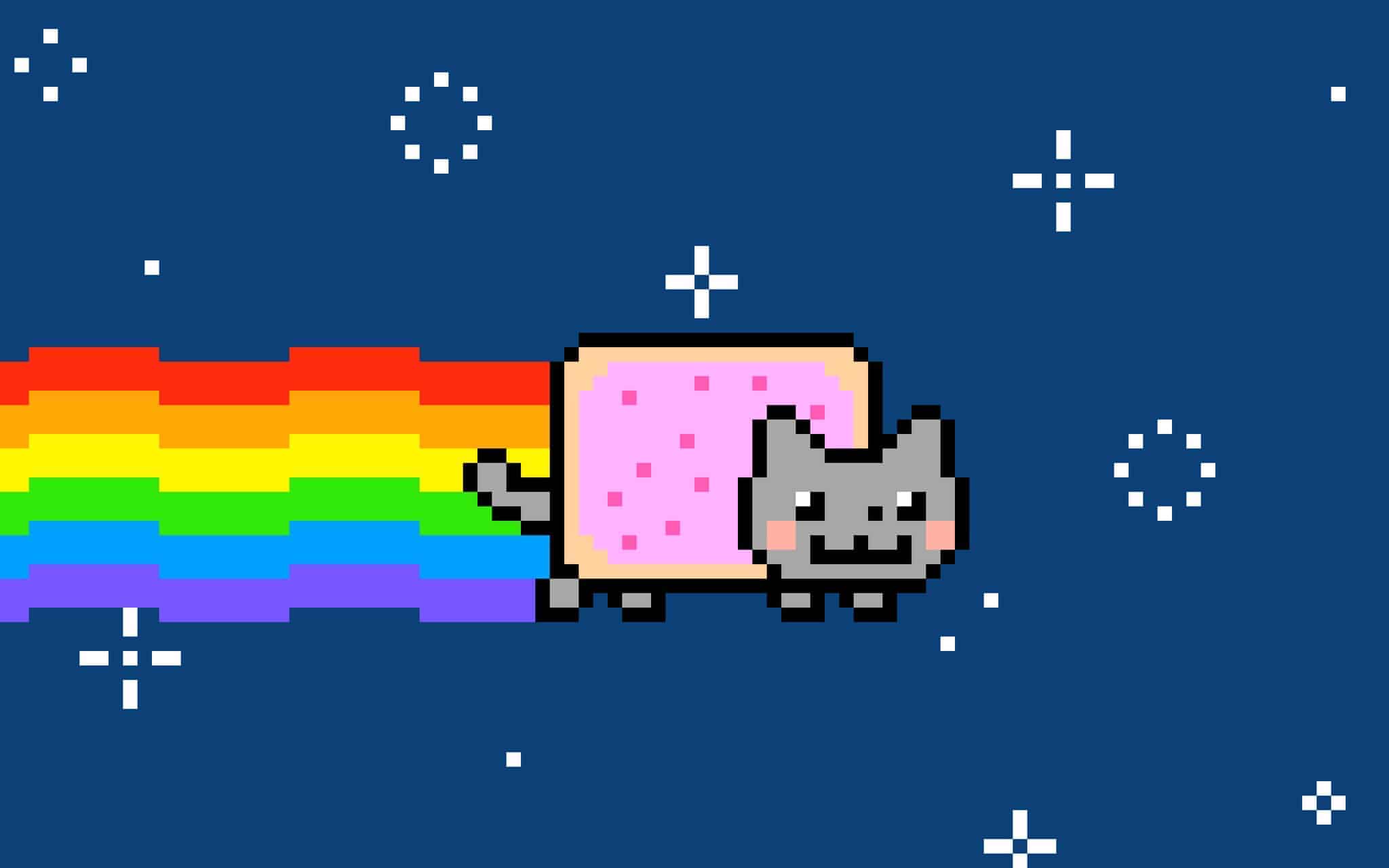The US$69 million paid for Beeple’s ‘Everydays: the First 5000 Days’ earlier this month has made non-fungible tokens (NFTs) one of the most talked about and controversial areas of the blockchain industry. Artists and cryptocurrency experts are still grappling with what this means for the art market.
Physical artworks have historically held value in part due to their scarcity, something digital artists have struggled to attribute to their own work in a medium which can be copied and shared with the click of a button. NFTs allow that scarcity to be applied to digital assets as well.
Fungible refers to anything which is completely interchangeable with another version of itself; for instance, any dollar is identical and interchangeable with any other dollar. Non-fungible tokens are unique. By encoding digital assets such as artworks to an NFT, it is possible to determine a unique copy of that artwork for the purposes of ownership and authenticity.
“It opens up a new frontier and knocks down another wall in the use case of Blockchain technology in what we consider the real world,” says Caroline Bowler, CEO of Australian cryptocurrency exchange BTC Markets. “Previously there was an absence of that proof of ownership, and NFTs create a format in which artists and others can prove that this is their work and that they own it. We all have digital content like your Facebook page or a tweet that we have a perception of ownership of, but one of the key facets of ownership is the ability to sell it.”
Some of the currently most popular NFTs on the market are Dapper Labs’ NBA Top Shots, where NFTs act as digital trading cards for short clips of exciting basketball game play. Sporting collectables have always had a massive market, but the excitement around Top Shot, assisted by the underlying technology, have helped attract prices ranging in the hundreds of thousands, including a “LeBron James ‘Cosmic’ Dunk” that sold for US$208,000 earlier this year. Since NBA Top Shot opened to the public, over 800,000 different accounts have purchased more than 12 million Top Shot NFTs for a total of over US$500 million, according to the National Basketball Association and data from DappRadar.
What does buying an NFT really mean?
But some critics fail to see the value of owning Top Shots NFTs since the video footage is already and openly available online. Indeed, this is the same criticism of any NFT, which works by declaring ownership of the authentic link to the URL where the digital asset is hosted online, not ownership of the asset itself. Owners of Top Shots don’t have exclusive rights to the clips, nor many other rights to the clips, which are still retained by the NBA.
“[The NBA] have quite cleverly split out the rights to distribution and ownership of that content versus the ownership of that particular,” Bowler said. “You’re owning the original of that [clip], but that doesn’t mean that you will see that additional ownership of the rights of distribution or the logo rights or any content that are very separate parts of this whole pie..”
The same could be said for many sports collectibles, however. In January this year, a 1952 Mickey Mantle baseball card was sold to actor and entrepreneur Rob Gough for US$5.2 million. Gough does not own any further distribution rights of the card, which is thought to be one of six still in existence. People who buy Top Shots view them in the same way — it is not necessarily access to the footage itself which is perceived to be valuable, but access to the authenticity of the original issuing of the clip as a Top Shot.
“[NFTs are] an interesting idea because really, what makes a trading card or a stamp at all valuable? It’s the market for it that makes it valuable and the marketplace that allows you to trade its authenticity,” says Jonathon Miller, Australian managing director of crypto exchange Kraken. “The thing about blockchain technology is it allows for those marketplaces and that authenticity, the trust in the authenticity to be carried out in a super low-cost way and to be carried out almost peer-to-peer.”
‘But, are they really worth that much?’
Of course, not everyone buys into the concept of NFTs securing authenticity, or that it is the only or even a primary factor contributing to a collectible’s value.
“If we historically look at things that are exclusive that have a lot of value, the value isn’t exactly in the ownership, it’s in the exclusivity,” says Victor Huang, blockchain developer and researcher of CoinCompanion.io, a crypto exchange and educational site. “So, in this game, exclusivity and ownership are not the same thing.”
A proponent of blockchain technology, Huang is skeptical of the current use case for NFTs of digital artworks, and of the current value being attributed to these assets, calling much of the activity surrounding them a “pump-and-dump” scheme. Cynicism surrounding the recent purchase of “Everydays,” for example, centers on whether the record-high purchase was intended to create hype for the buyer’s business, an NFT exchange, Metapurse.
Following the purchase, the buyer, Singaporean-based blockchain investor Vignesh Sundaresan — who used the pseudonym Metakovan when he was bidding for “Everydays” — further tokenized the artwork through the creation of 1.6 million B.20 tokens, each with a proportional share of ownership of the artwork. Initially sold to the public for US$0.36, the tokens shot up to US$23 at time of sale and are now trading at US$6.75, according to CoinMarketCap. Currently, Metapurse retains a 59% share of the B.20 tokens, to ensure a majority ownership, while Beeple, the original artist, owns 2%.
“[This technology] has unbelievable applications,” Huang says, “but not in the way it’s currently being used. Right now, it’s a huge bubble. It’s getting blown up a lot on social media. In a way, it kind of hurts the legitimacy of cryptocurrency with how people are using it and the speculation and hype behind it. A lot of people are going to end up with worthless assets.”
‘What about the artists?’
The fact is, the 2% of ownership Beeple has of the tokenization of his digital collage, is rare in the art world. Traditionally, once an artist sells a work, he or she doesn’t earn another cent even as the work trades hands multiple times, sometimes for millions of dollars. Dozens of platforms have emerged in recent months to help facilitate — or cash in on — the recent trend of artists minting and selling NFTs of their work. While there have been criticisms of the high cost of minting and hosting NFTs on these sites, there is one distinct advantage: NFTs allow artists to earn ongoing commissions on every subsequent sale by writing it into code of the NFT when it is minted.
“There are traditional artists that are now minting things digitally on [platforms] like OpenSea or Rarible, those platforms are really hitting their stride,” says Arielle Cassidy, a digital artist also known as ‘br0world’ based in Dayton, Ohio. “And even they’re like ‘This happened overnight, I had 60 followers two weeks ago and now I have two thousand!’ And they’re selling NFT art every day and they can’t sell any of the real pieces.”
Cassidy’s art takes inspiration from the experience of being a woman of color and feeling excluded from the male-dominated start-up space, in which she has not found success in attracting venture capital for various start-up projects she has pitched. She sees NFTs and the current market excitement around them as a potential alternative funding model for securing capital for these projects, and actively participates in the thriving online NFT artist communities on Twitter and Clubhouse.
Having graduated with a minor in art history from Louisiana State University, Cassidy is cognizant of the significance of the moment. “We’re all part of this next chapter in art — in humanity. What could all this become? I look at this from an art historical perspective, can you imagine if Da Vinci had minted the Mona Lisa?” she asked. “If he had sold the [NFT] hundreds of years ago, his family or estate would still be collecting residual commissions on that.”
Not all artists are excited by the developments, however. Mash Qureshi is an emcee based in Melbourne, Australia, who first became aware of NFTs when asked if he would be interested in creating them for his music in the middle of 2020. After investigating the technology he decided it was anathema to his approach to music, which places emphasis on inclusion and community building, rather than earning the highest price.
“It very quickly looked like artificial scarcity,” he said. “It looked that way by design, turning something into a scarce resource. That to me, doesn’t feel right.”
As the internet reshaped the entire music industry, and streaming services are criticized for undercompensating artists, NFTs have been posed as a potential solution. But Qureshi says this is not a problem which needs solving through NFTs, which would only make his music less accessible to his audience in a market where the internet allows for great opportunities for discovery and low-cost revenue streams.
“[Before the internet], doing a run of 50 CDs might cost you 20 bucks,” Qureshi says. “Well, that’s your subscription to Distrokid (an app that uploads your music to various streaming platforms), where you can put it on every platform you like indefinitely. So, the ability for artists to get compensated and discovered has been increased through the internet, and that’s massive. It creates ways to then create ingenious products and put them out and connect with your fans in new ways as well.”
Digital art is only half the story
Once it has achieved more widespread adoption, experts say digital ownership is only the beginning for the technology. In 2015, U.K. artist Imogen Heap pre-sold the copyright ownership of one of her songs on the blockchain. While the extent of this has yet to be challenged in court, in principle this could be applied to almost any intellectual property. If the copyright to an asset were tokenized on the blockchain, theoretically it could dramatically reduce the confusion and cost of establishing proper ownership.
This has applications in any area where fraud or antipiracy is a concern, from streaming services needing to ensure copies of films or music are authentic, to live events where determining the legitimacy of tickets can be next to impossible. For Miller, of Kraken, once the hype around NFT artworks dies down, people will realize it is just one more application to be added to people’s understanding of blockchain, and further highlights how many more use cases are left to be found for the relatively new technology.
“[NFTs are] a method of understanding what is otherwise blockchain technology,” Miller said. “It’s a deployment of that same technology and has created this new economy for all digital artists and other potential issuers of NFTs. It’s a super interesting phenomenon, but it shows that technologies people have been critical of in terms of adoption have shown there’s another whole area for adoption.”





